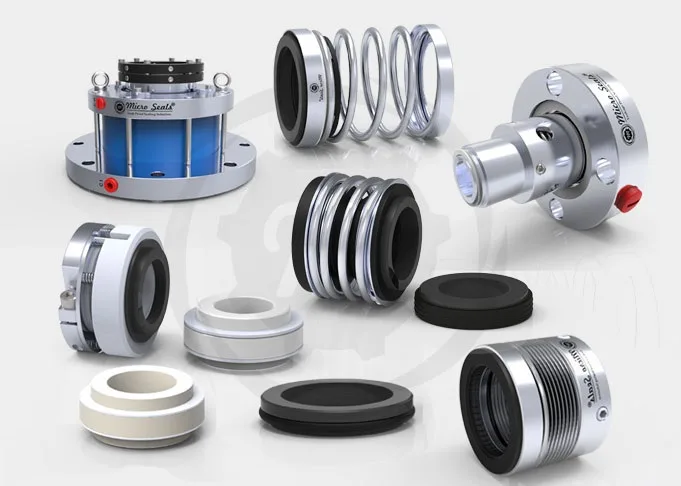The reliability of rotating equipment in the process sector is critical. Pumps, compressors, agitators, mixers, and other similar devices are included. The ability to avoid shaft leaks is an important aspect of evaluating efficiency. In terms of rotating equipment maintenance, the industry spent well over a billion dollars worldwide each year, with shaft leakage accounting for a large amount of this expenditure. Mechanical seals are an important component in the prevention of leakage.
What Are Mechanical Seals?
Mechanical seals are used to limit leakage in rotating equipment such as pumps and mixers. Their function is to keep gases and liquids from escaping into the surrounding environment uncontained.
How Do Mechanical Seals Work?
The rotating and stationary seal faces are the primary components that allow a mechanical seal to function. A liquid or gas cannot enter through the seal faces because they are lapped so flat that they cannot. As a result of this scenario, a shaft may rotate while a seal is mechanically maintained. The length of time that a seal will stay successfully in place is determined by the selection of the suitable seal material combination for the application.
Main Mechanical Seal Types
- Rubber Diaphragm. Because of their high degree of efficacy, these seals are widely used in pumps, mixers, agitators, compressors, and other rotating shaft equipment.
- Rubber Bellows. They may also be used in cases where a previous seal has damaged the shaft, making them perfect for equipment with limited space.
- O-Ring Mounted. These seals can align themselves with the machine’s rotating shaft to provide efficient production and avoid misalignment.
- PTFE Wedge. The tool was designed for use in circumstances involving expensive and corrosive liquids, especially in applications using very corrosive fluids.
Benefits of Mechanical Seals
- Friction and Power Loss Reduction. The mechanical seal’s faces are lubricated and have precisely the appropriate amount of space between them. This minimizes the amount of friction, which reduces the amount of power wasted.
- Long-Term Profitability. Fluid loss is greatly minimized due to the guarantee of a superior seal as compared to traditional sealing methods. Therefore, the frequency of breakdowns and the quantity of waste created are reduced.
- Less Maintenance. Mechanical seals are remarkably long-lasting and easy to repair if they fail to operate properly, provided they are properly aligned, there are no vibrations, and the temperature is just right. Furthermore, the majority of mechanical seal repairs are available at a reasonable cost.
- Elimination of Excessive Wear. A mechanical seal may be useful in safeguarding your equipment if it is properly installed. Clear guidelines for alignment, impeller orientation, and other associated issues have been created, all of which contribute to better stability and a longer lifetime for the equipment.
- Total Leakage Reduction. Leaks may be avoided using mechanical seals since they provide full sealing.
Mechanical Seal Components
- The Rotating Face. It is the rotating component connected to the shaft. It is an item that moves and is an important part of the seal.
- The Fixed Face. It is the part of the pump that does not move and is connected to the pump’s housing.
- Secondary Sealants. The shaft and insert mountings that are placed between the two sides of the mechanical seals make up the secondary sealant.
- Hardware. A variety of hardware is used in mechanical seals, such as pins and bellows, compression rings and glands, and other similar components.
What to Look for When Buying Mechanical Seals
- Types of Fluids. Before choosing a suitable mechanical seal, determine the fluid type. This allows you to choose a seal that is resistant to the liquids, chemicals, and gases you employ. Fluid viscosity and temperature must be studied to identify seal materials and qualities.
- Pressure. Another important factor is pressure, which allows you to pick between a balanced and an unbalanced seal based on your preferences.
- Seal Properties. Several aspects, including but not limited to corrosion and wear resistance, must be taken into consideration in the specification document for a mechanical seal. These aspects must be considered on the seal itself as well as on its faces.
Conclusion
Businesses working in a variety of industries may profit from investing in high-quality mechanical seals. Mechanical seals may help you achieve your objectives in several ways, including boosting the performance of your equipment, lowering maintenance costs, and safeguarding the environment.
Understanding the many types of mechanical seals and the components that make them is just the beginning. An examination of the application, installation, and operation (including leakage constraints) may assist in deciding the kind of seal that will be utilized and how successfully it will perform within the system.

